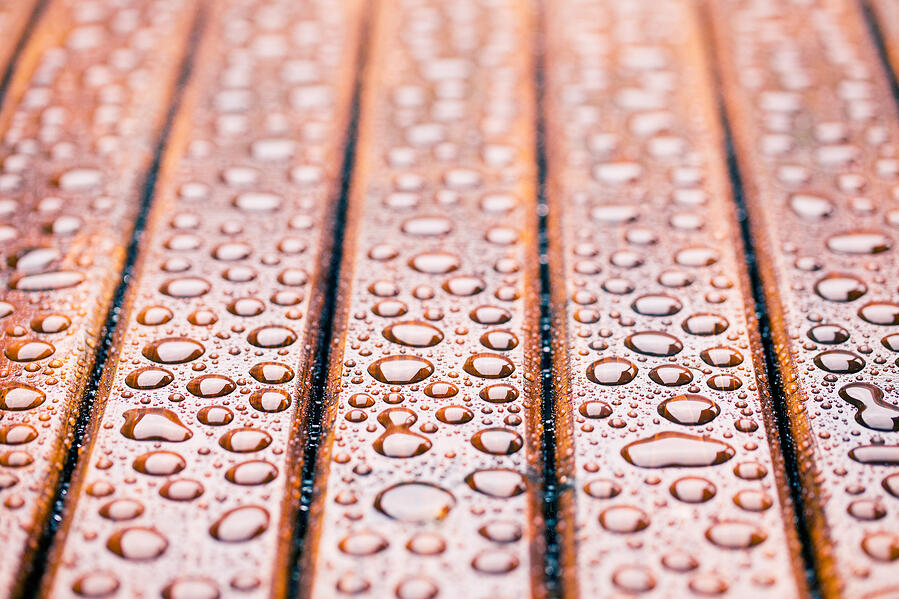4 Tips for Measuring Grain Moisture

The consequences of not measuring grain moisture content can end up costing you a lot more than you think. In fact, the moisture in your grain can play a crucial part in its quality, storage, and sale weight. And as these factors contribute heavily to farmers’ overall bottom line, keeping a tab on its moisture is integral to your operations.
Due to the significance of this, we’ve mapped out a few helpful techniques to ensure your moisture readings are up to par and reliable.
Types of Measuring Techniques
The most accurate method of determining grain moisture content is the standard scale and oven-based test which uses published standardized procedures to dry a sample in a laboratory oven. The moisture content is then calculated using an equation based on the weight lost during the oven drying. Other direct methods use microwaves or infrared technology. While very accurate, these methods are time-consuming and so not practical for farm and field use.
Moisture meters are indirect methods – they measure an electrical property of the grain that is then converted to moisture content. Because of their simplicity, they are the tool of choice for farm and field. Some meters use capacitance technology which requires a fairly large sample and an accurate test weight. Other meters use conductance where the meter measures the electrical resistance of the sample when a current is applied between two electrodes.
Delmhorst’s G-7 Grain Moisture Meter is a highly recommended conductance meter that is one of the easiest meters on the market to use - it requires a very small 3-4g sample and there is no weighing or grinding of the sample necessary. The meter’s built-in offset feature makes it easy to compensate for calibration variations vs the grain elevator. On-screen viewing of individual readings and important statistics allow for easy monitoring of target %MC.
Test Multiple Locations
Moisture meters allow you to conduct mulitple tests and obtain fast results whether taking individual sample test or inserting a probe in different locations. When doing this, make sure to bypass testingt he center or the corners of the packaged grain. If you're testing flowing grain, take a sample amount after every several bushels and test the sample. Make sure to mix the grain well for a representative, more accurate measurement.
If you’re testing grain in a bin, take samples from different depths and in various locations of the bin. Measure these different locations separately so you can get a good gauge as to which area may need more drying. A moisture profile that multiple tests can provide also helps in deciding the economic impact of whether to continue drying vs blending question.
Double Check the Temperature
After moisture content, grain temperature has the greatest affect on the accuracy of the meter reading. Use a quality grain thermometer (like the Delmhorst TM-100 system) to measure grain temperature. When possible, allow the meter and grain to come to the same temperature especially if the meter has been stored in a cold or warm environment prior to making measurements. Another great feature of the G-7 is its built-in manual or automatic temperature compensation feature. Best accuracy is achieved by manually entering the grain temperature into the meter - your meter reading will then be corrected for temperature. Higher temperatures (than 80F) will result in indicated moisture that is higher than actual grain MC and vice versa.
Regularly Check Your Moisture Meter
Like all test equipment, regular upkeep is necessary. Change the battery every six months or at the beginning and in the middle of the season. If not using the meter for more than 30days, remove the battery. Check the internal (electrical) calibration prior to each use. Keep the electrode clean and store the meter in its carry case and in a clean, dry place. If the differences between your meter and the elevator are consistently more than 2-3 points, have your meter checked by the manufacturer. Keeping your meter well-maintained will insure it remains as accurate to its standard as when manufactured and always provide consistent, repeatable readings.
A Note About Grain Meter “Accuracy”
In the case of the primary calibration, most instruments are accurate to within 1/2 of 1%, or better. The accuracy of the secondary calibration must be recognized in terms of repeatability of the meter readings. The calibration for a given grain may be “off” when compared with the oven test, but this variation may be compensated through a correction factor if the error is repeatable. The %MC Offset feature in the G-7 allows for such a correction.
In general, all meters repeat their readings within close terms when used on grain which has been well-conditioned and is uniform. Resistance-type meters may show more variations from one test to another than capacitance-type meters. However, the MC obtained with one meter as an average of various readings on many small samples should be in agreement with the MC obtained on a single large sample with another meter, assuming that the basic calibration of these instruments is very close to begin with.
All meters are less accurate when testing samples of non-uniform MC or samples with a moisture gradient which this usually occurs with large grain while in the drying process. A meter such as the G-7 may show the possible presence of high moisture pockets if the samples are taken from various areas from the mass and readings show significant variations. Whether one measures the MC of a few 3-4 gram samples as with the G-7, or of one single 250-gram sample, the testing is still being conducted on a few small parts of a large mass of grain.
Grain moisture meters operate at their best in the low moisture range (10%-20) and on samples that are well-conditioned and uniform. Under these conditions, the G-7 will yield readings with a repeatability of +/- 0.5%.
For more information on how to best measure the moisture of your grain or to get help deciding on the perfect moisture meter, please feel free to contact one of our specialists today!
Subscribe to Our Blog
Post Related

How to Measure Moisture in Paper/Wood Pulp


